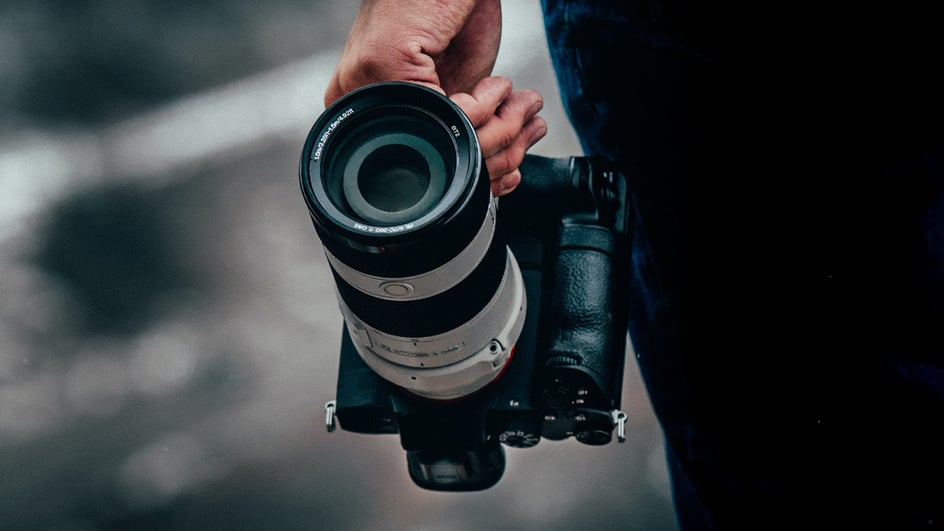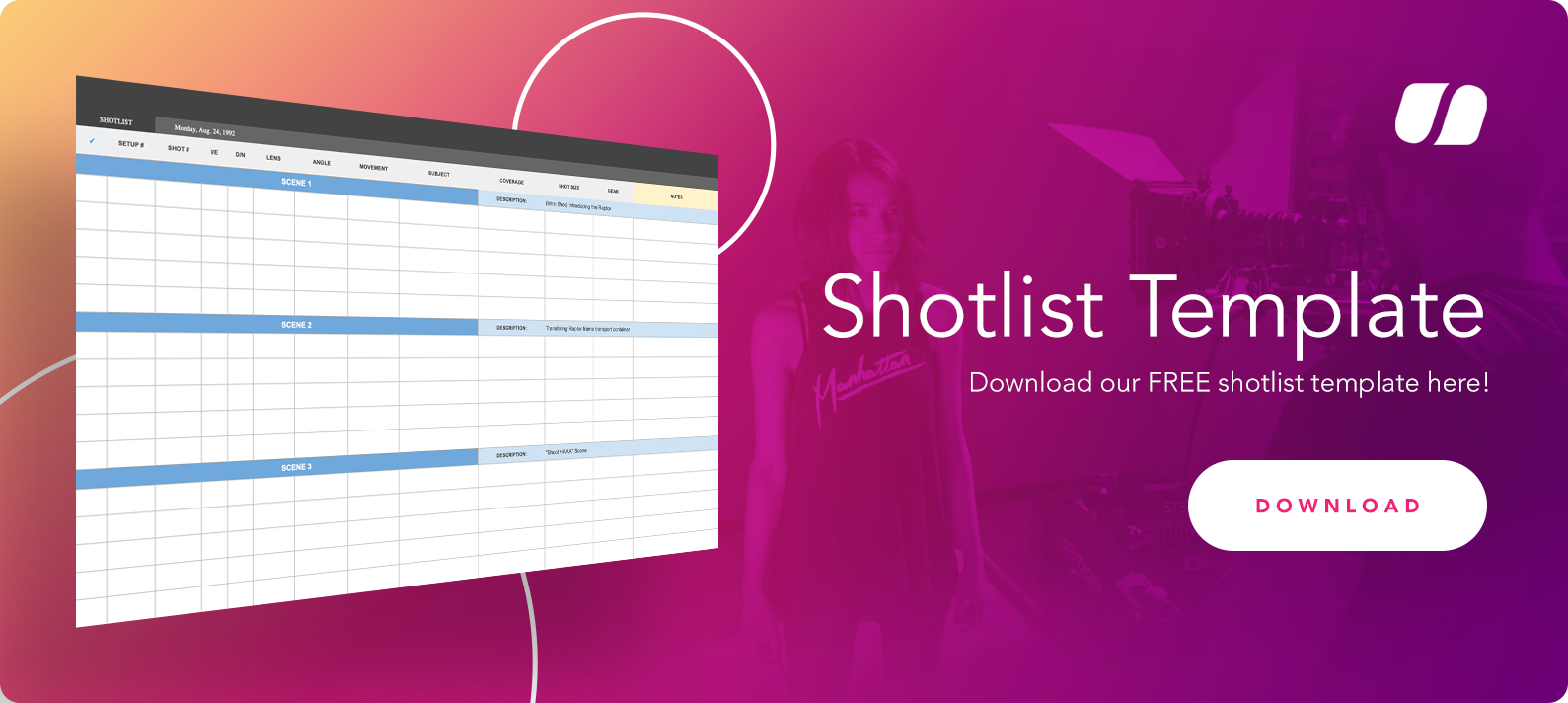
May 1, 2021
When fine tuning a project’s shot list, you give as much credence to focal length and aperture as you do to set design.
This is true for all creators — whether involved with filmmaking, videography, or corporate video production.
Before you set out to capture a specific type of shot, you take inventory of the gear that you already have on hand. In doing so, you’re able to gage how practical this shot is from a budget and deadline standpoint.
So if you want to stabilize a tracking shot without investing in a dolly setup, maybe you use a camera stabilizer like the Ronin-SC. Or, to save more money and still capture a steady shot, maybe you stabilize the footage with a camera strap instead.
In cases like this, there are plenty of work-arounds that give you the flexibility to capture the shots you want with the resources available.
As you plan and produce new videos to share on YouTube, lens choice is pivotal.
While a 16-35mm lens is commonly used for vlogging purposes, it’s not as well-suited for capturing footage from a far vantage point.
For times when you need smooth bokeh and sharply defined details — especially (but not only) when you’re filming at a distance — it pays off to have a telephoto lens at the ready.
This article isn’t meant to sway you into buying a telephoto lens or discredit your ability to make great content with the gear you already have on hand.
Instead, we’re calling attention to specific ways that YouTubers across different niches can use telephoto lenses to their advantage.
The Holy Trinity of Lenses
Trial and error is as much a part of the production process as anything else.
When it comes to investing in new gear, a product can be positively reviewed and top-quality but still not be compatible with your work style.
This is because your fellow creator’s go-to gear may overcomplicate your process rather than simplify it — especially in terms of usability, mobility, and affordability.
If asked, you could probably list off specific products that you consider essential to your day-to-day work. And your list would probably look different than someone else’s.
The same can be said for camera settings and lens preferences.
In the video below, filmmaker and photographer Peter McKinnon shares his product recommendations for what he calls the “Holy Trinity” of lenses.
The rationale here is that with a kit of a 16-35mm, 24-70mm, and 70-200mm lens you have all that you need to capture any type of shot during a shoot.
Telephoto lenses like the 70-200mm ones mentioned in the video are considered part of this Holy Trinity for a number of reasons.
For one, the increased focal length of the telephoto lens allows you to film at a distance but capture footage that makes the viewer feel like you were much closer to the action.
Telephoto lenses are also commonly used for portrait photography and videography that frames a specific subject — say an actor in a scene or a couple on their wedding day.
The effect is highly cinematic because the subject is in sharp focus while the background is softly blurred.
For all of its perks, however, a telephoto lens might not be one of your go-to lenses. It all comes down to your individual preferences and processes.
If you’ve been on the fence about investing in a telephoto lens, you may walk away from this article more confident in your decision to not purchase a new lens. But the opposite could also be true.
To help you decide, the next section offers more context on how different types of YouTubers use this lens on a daily basis.
Who Could Benefit From Using Telephoto Lenses?
1. Travel Videographers
By nature of their trade, travel videographers are often strapped for gear (and space to carry said gear). So it makes sense that this type of YouTube creator values versatility and mobility in their gear.
To be fully transparent, telephoto lenses are significantly longer and heavier than 16-35mm lenses — which may be a dealbreaker for some travel vloggers.
But what the lens lacks in compactness, it makes up for with focal range and compression quality.
During a shoot, you have the flexibility to capture the entire scale of a landscape or highlight specific subjects or details in a shot.
2. Wedding Videographers
Wedding videographers encounter similar obstacles as travel videographers and sports videographers — namely, less proximity and more people.
Especially when many wedding guests are moving around at once, a telephoto lens allows you to capture candid moments without needing to be in the middle of the action.
The increased focal length allows you to stand at a distance and capture the shots that you want without taking the risk of interrupting the moment.
This ability to remain in the background but capture footage as though you’re in close proximity gives wedding videographers an advantage when on the job.
3. Indie Filmmakers
In many ways, a telephoto lens opens up the potential for the kinds of shots that filmmakers can capture during production.
In the video below, YouTube creator In Depth Cine describes the importance of long lenses (i.e., telephoto lenses) in the German film “Heaven Knows What” (2016).
The film’s directors used a telephoto lens to isolate the characters in the frame and blur the background — an effect that amplified the mood and tone of the story.
While the characters’ feelings of loneliness come across through the narrative, this becomes even more apparent (visually) because of the filmmakers’ lens choice.
4. Sports Videographers
Unless you’re filming an interview with an athlete — and need to capture a wide shot in close proximity — a telephoto lens is a lens that many sports videographers depend on most when capturing live footage of a game.
This is because you have the ability to stand at a distance and still get a clear shot of the action.
YouTube creator Grant Giszewski shares his gear recommendations for sports videographers in the video below:
Looking For an Affordable Telephoto Lens?
A telephoto lens is a worthwhile investment for creators across different niches, but this type of lens typically comes at a high price point — especially if the maximum aperture is f/2.8.
For a more affordable alternative, several YouTube creators featured in this piece shared their recommendations for f/4.0 lenses that shave down the cost significantly.
As a content creator, investing in a telephoto lens could be a strategic next move to make. But there’s also a chance it might not be.
The decision ultimately comes down to your specific use-case scenario and what makes the most sense practically for your production needs.
